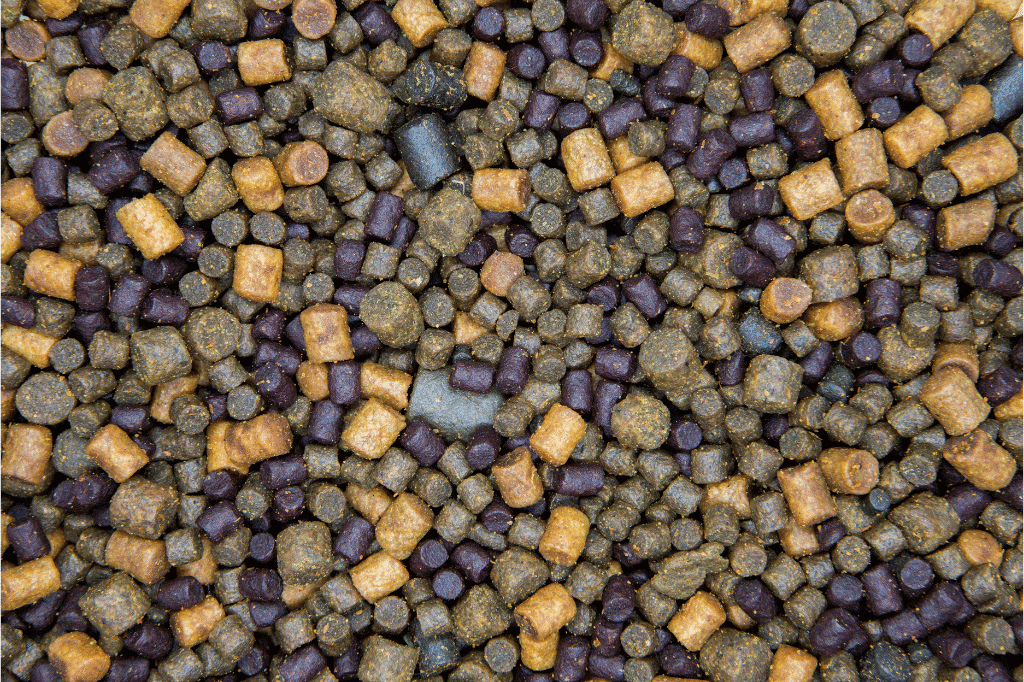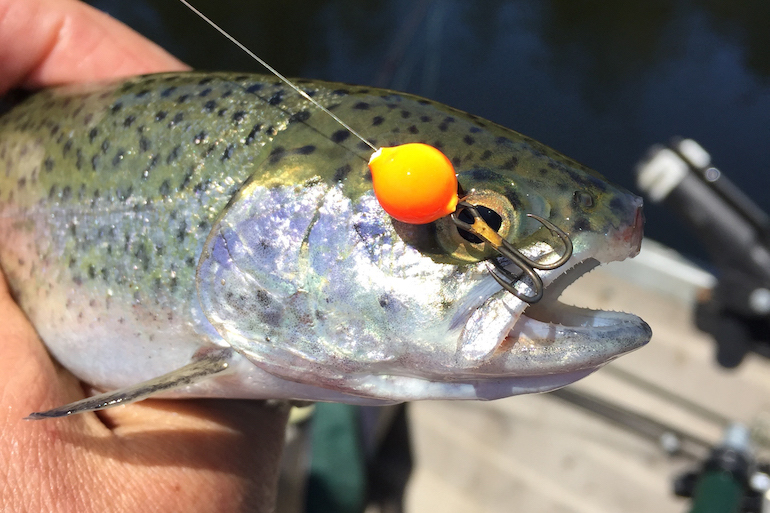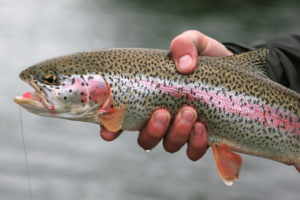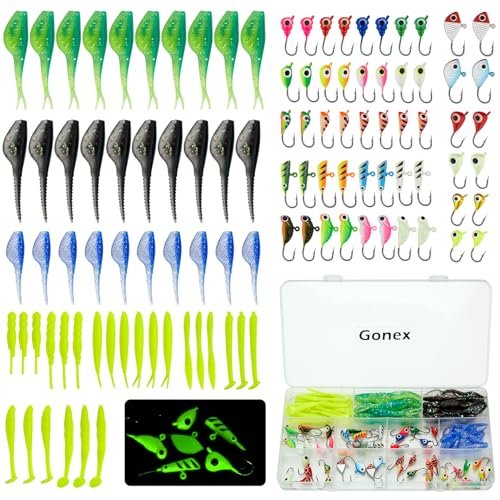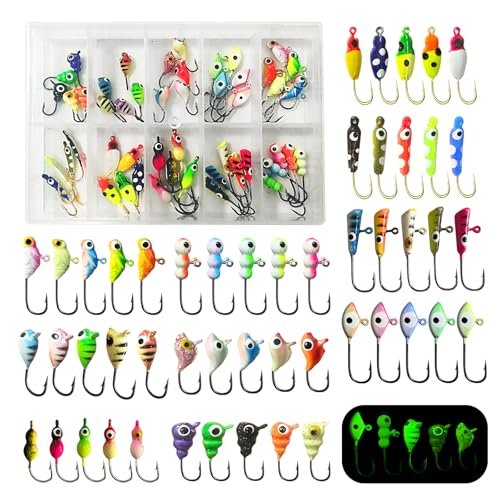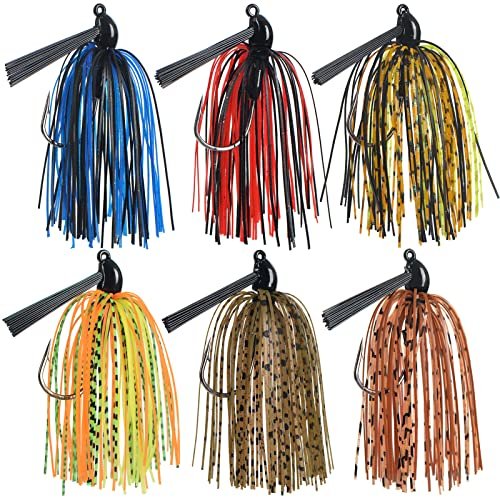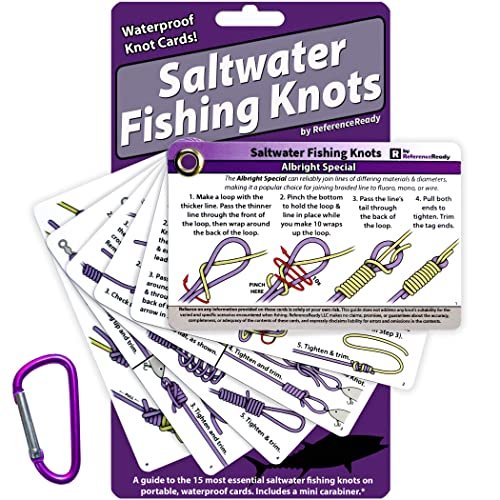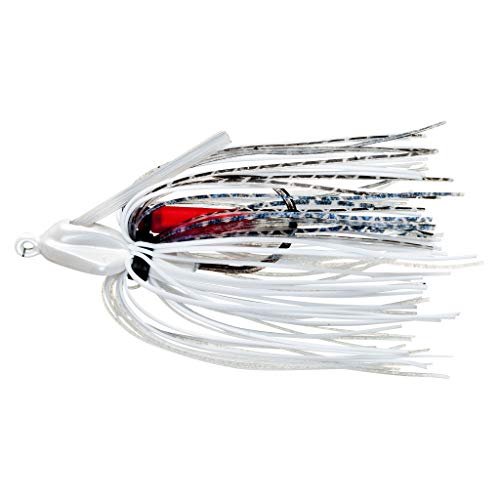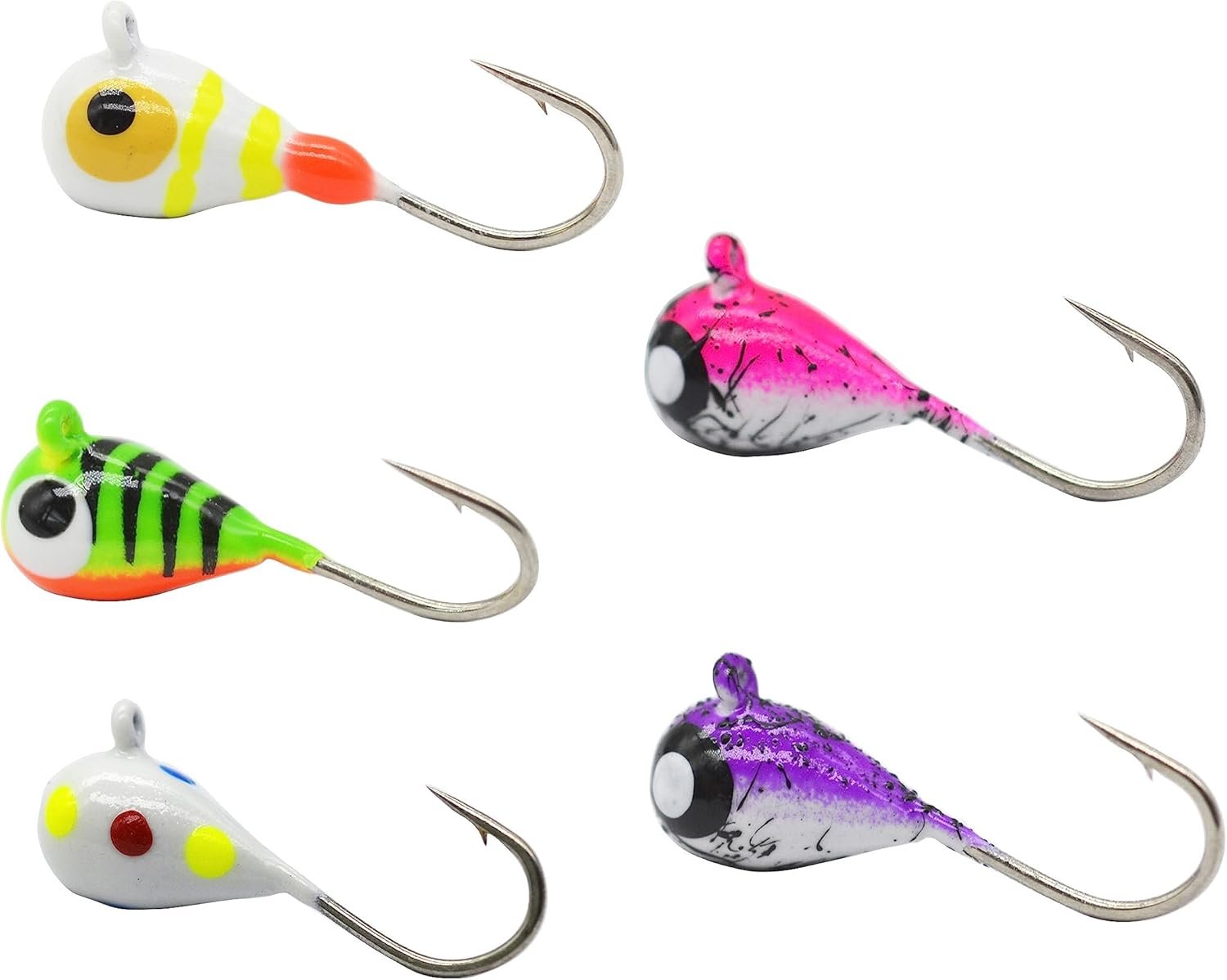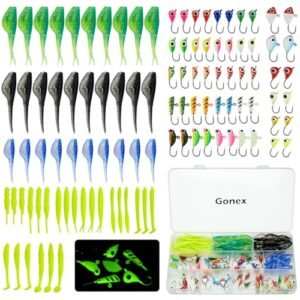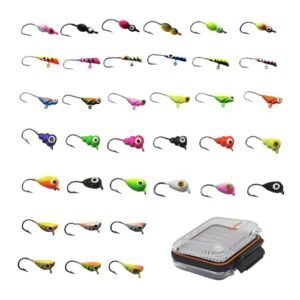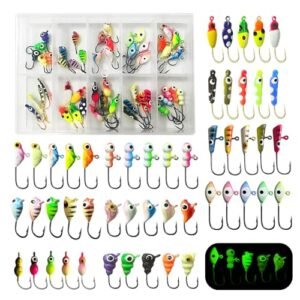Trout fishing is a rewarding and popular pastime that connects anglers with the serene beauty of nature. Selecting the right trout fishing bait is crucial for a successful catch, as trout are known for being particularly discerning fish. Live baits like earthworms, grubs, and minnows are often irresistible to trout due to their natural movement and scent.
On the other hand, artificial lures, such as spinners, spoons, and flies, are designed to mimic the prey trout feed on, triggering their instinct to strike. The choice of bait can be influenced by factors such as water temperature, clarity, and trout species. An angler’s arsenal should be versatile, ensuring they’re equipped to adapt to the preferences of local trout populations.
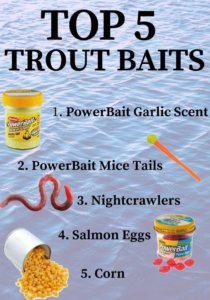
Bait Basics: Trout Preferences
Understanding the preferences of trout can make a fishing trip successful. Choosing the right bait is crucial to lure these swift swimmers. Let’s dive into the essentials of selecting the most tempting offerings for trout.
Natural Vs. Artificial Baits
Trout are discerning fish, often favoring baits that mimic their natural prey. Knowing when to use natural or artificial options can tip the scales in your favor.
- Natural baits are effective because they offer the scent and texture trout are accustomed to. Common choices include worms, minnows, and insects.
- Artificial baits such as spinners, spoons, and flies are designed to attract trout through visual appeal and movement. They are durable and can be used multiple times.
| Bait Type | Advantages | Disadvantages |
|---|---|---|
| Natural | Highly attractive, familiar to trout | Can deteriorate, limited use |
| Artificial | Long-lasting, versatile | May require skill to mimic real prey |
Seasonal Trout Diets
As seasons change, so do the feeding habits of trout. Aligning your bait with their current diet increases your chances of a catch.
- Spring: Trout feed on insect larvae and small fish as waters warm.
- Summer: Abundant insects and crustaceans dominate their diet.
- Fall: Preparing for winter, trout aggressively hunt for high-calorie meals.
- Winter: Cold water slows metabolism, making trout less active feeders.
Match your bait to the season, and you’ll be more likely to match the trout’s appetite. Replicate their natural food sources for the best results.
Live Bait Mastery
Trout fishing transforms with live bait. Savvy anglers know that to hook the big ones, understanding and using the right live bait is key. Mastering live bait for trout fishing means tapping into the fish’s natural diet. Let’s dive into the top trout fishing bait choices that make trout go wild.
Insects: A Trout Delicacy
Trout can’t resist insects. They are protein-rich and abundant in their habitat. Here’s a list of popular live insect baits:
- Grasshoppers – perfect for late summer fishing.
- Mayflies – a top pick during hatching seasons.
- Ants – effective when naturally present on the water.
Match the hatch by observing what insects are active and mimic those with your bait.
Worms: The Classic Choice
Worms are the go-to bait for many anglers. They work exceptionally well for trout because:
| Worm Type | Why They Work |
|---|---|
| Red Wigglers | They thrash enticingly in the water. |
| Nightcrawlers | They’re larger, attracting bigger trout. |
Present worms naturally by allowing them to drift with the current.
Minnows: Imitating Small Prey
Trout often feed on small fish. Using minnows can be highly effective. Ensure they are:
- Lively – Active minnows attract more trout.
- Fresh – Freshness matters for scent and movement.
Hook minnows through the lips or back to keep them swimming naturally.
Artificial Bait Tactics
Trout fishing with artificial baits is an exciting challenge. These baits mimic real food that trout love. Below, we explore effective tactics using artificial lures.
Choosing The Right Lure
Picking the perfect lure is crucial for successful trout fishing. Consider these factors:
- Water conditions: Clear or murky? Choose accordingly.
- Fish activity: Are the trout feeding aggressively? Select a more visible, active lure.
- Time of day: Use lighter or darker lures based on sunlight.
Color Selection Strategies
Color plays a vital role in luring trout. Follow these strategies:
| Water Clarity | Best Color Choices |
|---|---|
| Clear Water | Natural greens, browns |
| Murky Water | Bright oranges, yellows |
Match the hatch by using colors similar to local baitfish.
The Role Of Scent In Lures
Scent can attract or deter trout. Use it wisely:
- Choose a lure with a mild, natural scent.
- Avoid overpowering artificial smells.
- Apply scent to lures in small amounts.
This approach can make your lure irresistible to trout.
Homemade Bait Recipes
Calling all trout fishing enthusiasts! If you’re eager to up your game, you can’t ignore the power of homemade trout fishing bait. Crafting your own trout fishing bait not only saves money but also allows for customization to attract trout in your local waters. Let’s dive into some tried-and-true homemade trout fishing bait recipes that could give you the edge on your next fishing trip.
Cheese-based Doughs
Trout love cheese, and creating a cheese-based dough is simple. Start with some common kitchen ingredients:
- 1 cup shredded cheddar cheese
- 1/2 cup flour
- 1/2 cup cornmeal
- 1 tablespoon garlic powder
Mix these ingredients in a bowl. Slowly add water until you have a thick dough. Form small balls with the dough. Store them in a plastic bag in the fridge.
Creating Effective Powerbait Mixes
PowerBait, a popular store-bought option, can be customized at home for better results. Here’s a basic recipe:
- Begin with a jar of commercial PowerBait.
- Add a teaspoon of garlic powder or anise oil for scent.
- Mix in a tablespoon of your local soil to match the lake’s ecosystem.
Mix these ingredients well. Use small amounts on your hook for a bait that trout can’t resist.
The Impact Of Water Conditions
Trout fishing enthusiasts know that success hinges on many factors, and water conditions play a pivotal role. Understanding how different water conditions affect trout behavior is crucial for choosing the right trout fishing bait. Let’s delve into the specifics of water temperature and clarity to improve your chances of a great catch.
Temperature: A Key Factor
Trout are sensitive to water temperature, and it influences their feeding habits significantly. Optimal water temperatures range from 50-60 degrees Fahrenheit. During these conditions, trout are most active and likely to bite. Here’s how temperature affects trout fishing bait selection:
- Colder waters may require bait that moves slowly, imitating the lethargic movement of natural prey.
- In warmer waters, trout seek cooler depths, so choose trout fishing bait that can sink or be fished deeper.
Always check the water temperature before your fishing trip and select trout fishing bait accordingly for the best results.
Clarity And Bait Visibility
Water clarity directly impacts how well trout can see the bait. Clear water demands a stealthier approach with more natural and subdued bait colors. In contrast, murky waters call for brighter and more vibrant bait to stand out. Consider these points:
| Water Clarity | Bait Color | Bait Action |
|---|---|---|
| Clear | Subtle | Realistic |
| Murky | Bright | Exaggerated |
Adapt your bait color and action to the water’s clarity to make it irresistible to trout.
Stealth And Presentation
Trout fishing is an art that combines skill with subtlety. The right approach can make all the difference. Successful anglers know that stealth and presentation are key. Trout are smart and can easily get spooked. It’s crucial to be quiet and careful. This section will explore how to master these techniques.
Casting Techniques For Shy Trout
Shy trout demand a gentle touch. Your casting technique can either draw them in or send them away. Let’s dive into methods that keep trout calm and interested.
- Use a light line to minimize water disturbance.
- Practice the roll cast to avoid overhead movements.
- Cast upstream and let your bait drift down naturally.
- Aim for precision, landing your bait softly near hiding spots.
The Importance Of Bait Movement
Trout are keen observers. They watch how bait moves in the water. The right movement can be irresistible to them. Let’s see what makes bait come alive.
| Bait Type | Movement | Effect on Trout |
|---|---|---|
| Live Worms | Wiggling | Mimics natural prey |
| Artificial Lures | Varied reeling | Triggers curiosity |
| Flies | Fluttering | Imitates insects |
To mimic natural movement, keep these tips in mind:
- Observe how real insects and worms move in water.
- Vary the speed of your reeling to attract attention.
- Use jerks and pauses to simulate life-like action.
By focusing on these elements, your bait will seem more real. This invites more bites from wary trout.
Location, Location, Location
‘Location, Location, Location’ – these are the three most important factors in trout fishing. Choosing the right spot can mean the difference between a successful haul and going home empty-handed. Trout are known for being selective with their habitat, favoring locations that provide safety, comfort, and abundant food. To increase your chances of a great catch, understanding where trout are likely to be is key.
Reading Water Structures
Trout have a knack for picking the best spots in a body of water. Look for unique features such as:
- Riffles: Fast-moving shallow sections that oxygenate water and attract insects.
- Pools: Deeper areas where trout rest and escape strong currents.
- Runs: Channels of moderate depth and current, where trout often feed.
- Eddies: Spots where the current doubles back, creating a calm area.
These structures are prime feeding grounds for trout. Approach them quietly and cast upstream, allowing your bait to drift naturally.
Seasonal Trout Habitats
As seasons change, so do the preferred habitats of trout:
| Season | Trout Location |
|---|---|
| Spring: | Look for trout in shallower waters as they search for food after winter. |
| Summer: | Trout escape the heat in deeper, cooler water with adequate shade. |
| Fall: | They often move to riffles and runs for spawning and feeding. |
| Winter: | Slow-moving pools with less ice cover are the key spots. |
Always check local fishing reports and weather patterns to find the best spots in any season. Remember, a well-chosen location paired with the right bait sets you up for trout fishing success.
Advanced Tips And Tricks
Mastering trout fishing involves more than just basic knowledge. Advanced tips and tricks can significantly improve your results. Let’s dive into some proven strategies that will elevate your trout fishing game.
Tuning Your Approach
Adapt your tactics based on weather and water conditions. Trout behavior changes, so should your approach.
- Clear water: Use lighter, less visible lines.
- Overcast skies: Try brighter bait for better visibility.
Experiment with different retrieval speeds. Sometimes, a slower or faster retrieve triggers bites.
Keeping A Bait Diary
Maintaining a bait diary enhances your strategy. Note every detail about your fishing trips.
| Date | Location | Bait Used | Fish Caught |
|---|---|---|---|
| June 5 | Lake Pearl | Red Worms | 4 Trout |
| June 12 | River Blue | Crickets | 7 Trout |
Review your notes to identify patterns and optimize your bait choices.
Local Knowledge: A Secret Weapon
Talk to local anglers and bait shop owners. They share insights not found in books.
- Ask about the best fishing spots.
- Learn about the top baits for local trout.
Each location has unique traits. Understanding these can lead to more successful outings.
Frequently Asked Questions
What Is The Best Bait To Catch Trout?
The best bait for catching trout is live worms, small minnows, or artificial lures mimicking local prey. Fly fishing with nymphs or streamers is also highly effective.
What Is The Trick To Catching Trout?
To catch trout effectively, use lightweight fishing gear, select the right bait or lure, fish during early morning or late evening, stay quiet to avoid scaring them, and cast upstream in moving waters.
What Is The Best Rig For Trout Fishing?
The best rig for trout fishing is a lightweight, sensitive rod with a spinning reel, using a 4-6 lb test line and small hooks for live bait or artificial lures.
What Smell Attracts Trout?
Trout are attracted to scents that mimic their natural prey, such as earthy, fishy, or garlic odors. Using baits or lures infused with these smells can increase your chances of catching them.
Conclusion: Trout Fishing Bait Secrets: Boost Your Catch Rate!
As our exploration of trout fishing bait concludes, remember that success hinges on understanding trout behavior and habitat. Experiment with different baits and techniques to discover what works best for your local waters. Whether you’re a seasoned angler or just starting out, the right bait can make all the difference.
Happy fishing, and tight lines!

